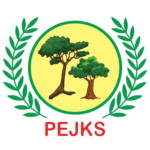Target Intervention Project: High Risk Groups TI FSW Project
PEJKS has been implementing the Target Intervention Program to provide prevention in the operational areas. This program also focuses on improving sexual and reproductive health among the target groups.
For HIV/AIDS prevention program purposes, it would be useful to divide the entire population of a country into groups of people who practice high-risk behaviors and those who practice low-risk behaviors. The risk behaviors could be unprotected multi-partner sexual intercourse and injection drug use without sterile precautions. In this scenario, HIV infection would travel faster and wider in populations that practice high-risk behaviors. Hence in the interest of overall control of the HIV epidemic, it is necessary to intervene as early as possible. This is done by initiating and supporting Targeted Interventions which could lessen the spread within high-risk groups and thereby in the general population.
It is estimated that more than 90% of HIV transmission in India is related to unprotected sexual intercourse and sharing of injecting equipment between an infected and uninfected individual. Not everyone in the population has the same risk of acquiring or transmitting HIV. Much of the HIV transmission in India occurs within groups or networks of individuals who have higher levels of risk due to a higher number of sexual partners or the sharing of injection drug equipment.
There are three HRGs (High Risk Groups), otherwise referred to as HRGs to reduce stigma towards them. These HRGs are;
- Female sex workers (FSWs)
- High-risk men who have sex with men (MSM)
- Transgender (TG)
- Injecting Drug Users (IDUs)
During the year, health camps and regular check-ups were undertaken regularly to provide health services and identify new cases.
- Regular counseling sessions with HRGs and their family members were organized in the operational areas. Qualified counselors have helped the target groups and provided motivational support through one-to-one and groups
- Awareness sessions were also carried out at Drop-in-Centre (DIC) through various social and community interaction activities gaming, singing, dancing, etc.
- World Aids day and awareness camps were organized at operational areas.
Explore
Contact
PEJKS Training Programs
- Women Empowerment and Child Development
- Jute Bag Program
- Livelihood Promotion through Skill Development under Skill India Program

